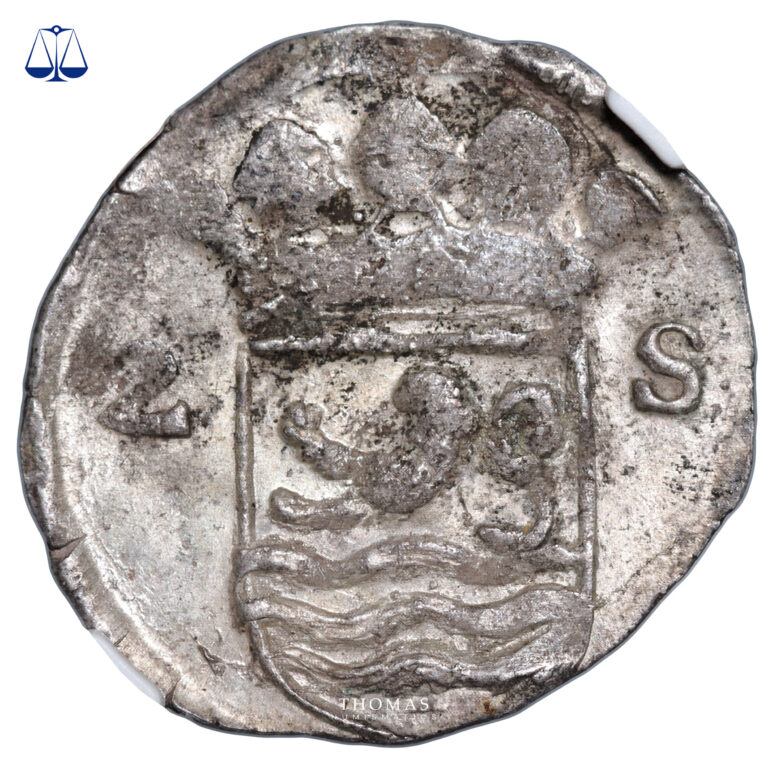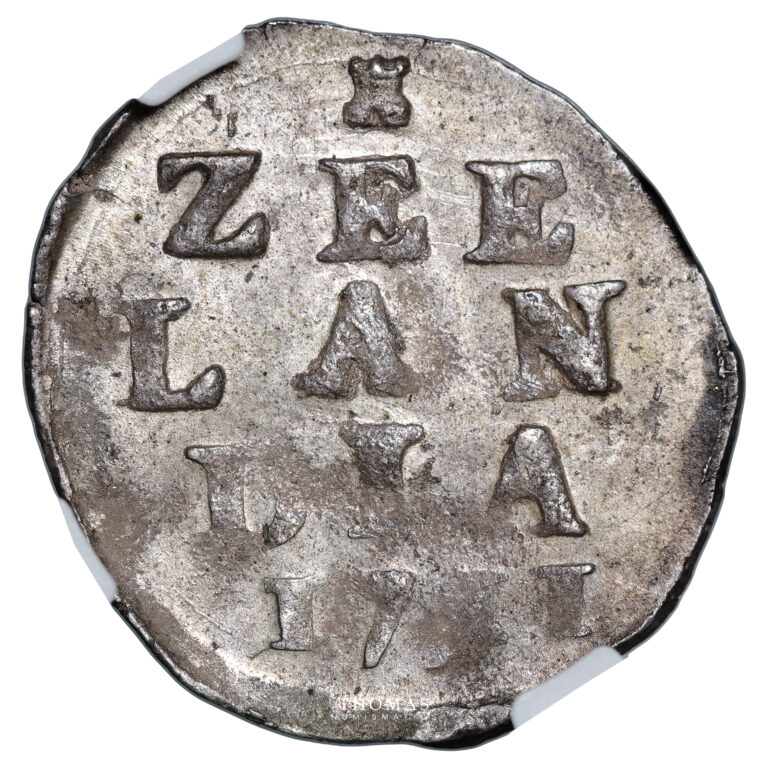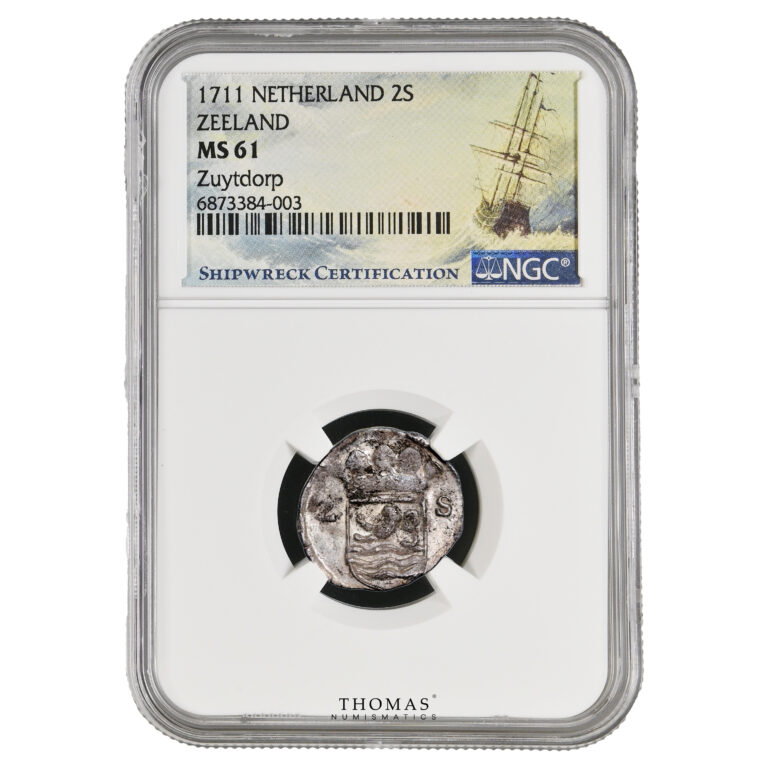Netherlands
2 Stuiver – Zeeland – NGC MS 61 – shipwreck treasure – Zuytdorp
950€
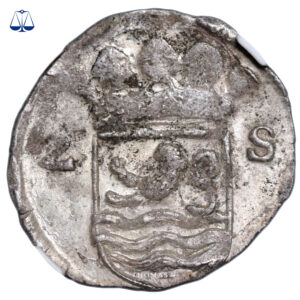
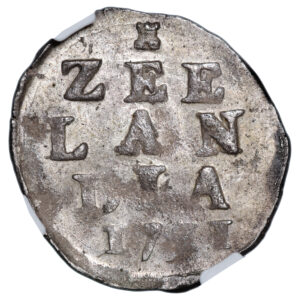
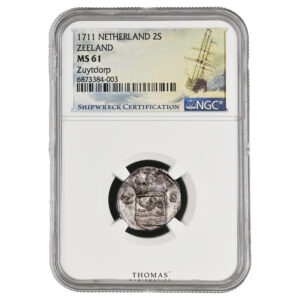
Netherlands
2 Stuiver – Zeeland – NGC MS 61 – shipwreck treasure – Zuytdorp
950€
Coin certified NGC MS 61. Very high grade.
-
Pedigree :
Pedigree : Coin from shipwreck Zuytdorp
The Zuytdorp, a ship of the Dutch East India Company (VOC), disappeared in 1712 while traveling from the Netherlands to Batavia (Jakarta). It was carrying a valuable cargo, including a large amount of silver.
Among the ships lost off the coast of Western Australia, the Zuytdorp is the only one from which no survivors reached Batavia.
The wreck is one of the most difficult to explore in Australia. After amateur excavations and dives by treasure hunters, the Western Australian Museum took responsibility for the site in 1963.
The initial goal was to recover the remaining silver to prevent looting. Due to extreme conditions, a watchkeeper was stationed near the site in the 1970s.
With little progress, research was suspended in the early 1980s. A local fisherman was then hired to monitor the wreck part-time.
In 1986, excavations resumed with a maritime approach using a 7-meter boat. New techniques, such as aerial photography, were employed.
These methods enabled the recovery of various artifacts, including a well-preserved cannon, coins, lead ingots, glassware, and a large anchor.
